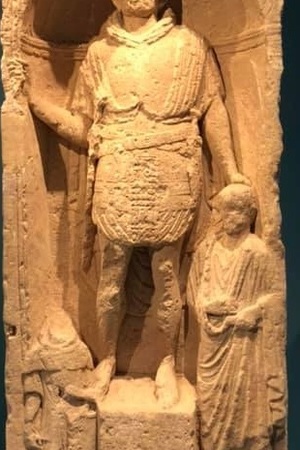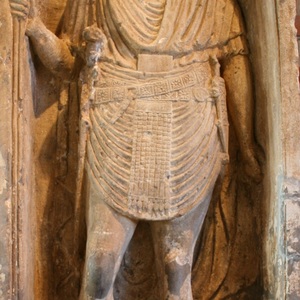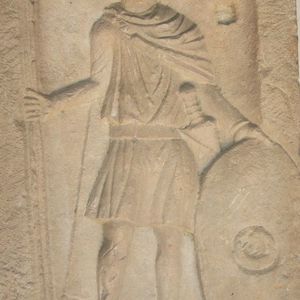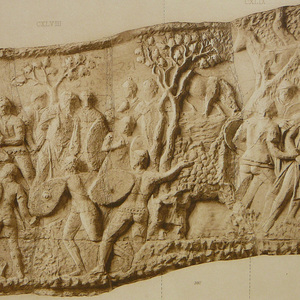Auxiliary skirmisher
Auxilia-a soldier of the auxiliary part of the ancient Roman army, originally recruited from non-citizens of Rome: from vassal and allied peoples, as well as from foreign mercenaries. One of the most common types of auxiliary troops were skirmishers, armed with a throwing spear-a lancet and with clipeus, or parma During the Republic, this niche was filled by the famous velites, but by the time of the Principate and the professional imperial army of light skirmishers, auxiliary troops were supplied. Skirmishers, together with cavalry or independently, were engaged in reconnaissance, combat protection of marching columns, foraging, on difficult terrain, such as forests and mountains, they were simply necessary. The constant need of the Roman army for skirmishers led to their appearance in the state of legions called lantsiariev at the beginning of the 3rd century.
Auxiliaries, in addition to skirmishers, were several types-light cavalry, archers, spearmen. All of them were united primarily by their civil status. As opposed to legionnaires they were initially recruited from the peoples subject to Rome, who did not have Roman citizenship and, as a result, could not enjoy the rights of Roman citizens. However, already during the reign of Trajan and Hadrian (the first half of the second century), a large number of auxiliary parts are recorded in the sources, the names of which contain "civium Romanorum". These units either received an early grant of citizenship to all their fighters for military merit, or were initially recruited from Roman citizens, or the fighters and part received citizenship rights already at recruitment, as a sign of the special value of the new auxilia. In part, auxiliaries were supplemented by mandatory conscription from dependent peoples. For example, the famous Batavians, who supplied the Roman army with magnificent infantry and cavalry, were exempt from any other duties and taxes.
After Hadrian's reforms, all Roman units, both legions and auxiliaries, were given clearly defined recruiting districts near their permanent locations. This led to the enlistment of non-citizens in the legions and citizens in the auxilia on a systematic basis. The term of service, at the end of which the auxiliary could receive the rights of a Roman citizen, reached 25 years. Citizenship rights were also granted to the family of a veteran, or to a woman and children whom he wished to recognize as such in a military diploma-a document containing information about the service of the auxiliary and about the privileges he received in retirement.
Quite a lot is known about auxiliaries. A large number of both visual and written sources have been preserved.
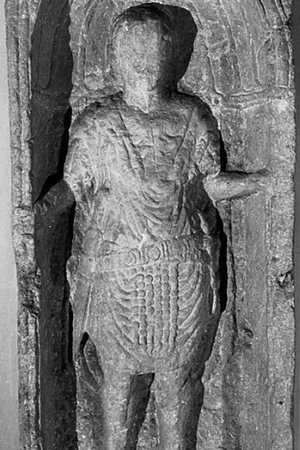 Tombstone of Auxiliarus Lycaeus of the First Pannonian Cohort (Lat. Cohors I Pannoniorum). Museum of Wiesbaden, Germany. Second half of the 1st century AD
Tombstone of Auxiliarus Lycaeus of the First Pannonian Cohort (Lat. Cohors I Pannoniorum). Museum of Wiesbaden, Germany. Second half of the 1st century AD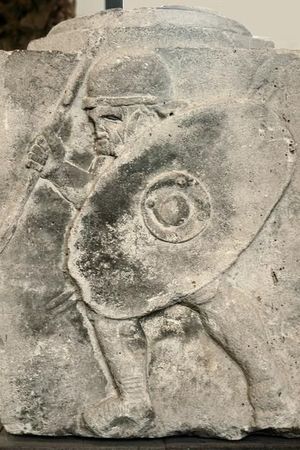 Image of a Roman warrior with a clipeus. Bas-relief of the pedestal of one of the columns that decorated the courtyard in front of the complex of buildings of the headquarters (praetorium and principia) of the citadel of the Roman city of Mogontiac (Latin Mogontiacum, modern. German city of Mainz). "Land Museum", Mainz, Germany. Second half of the first century AD
Image of a Roman warrior with a clipeus. Bas-relief of the pedestal of one of the columns that decorated the courtyard in front of the complex of buildings of the headquarters (praetorium and principia) of the citadel of the Roman city of Mogontiac (Latin Mogontiacum, modern. German city of Mainz). "Land Museum", Mainz, Germany. Second half of the first century ADEquipment
The equipment of an auxiliary skirmisher for the period of 1-2 centuries AD could consist of the following elements::
Fabric / Leather products:
Protective equipment items based on metal:
Weapons items:
- Lanceae
Additional elements:
Reconstruction
If we consider the most traditional image of an auxilary skirmisher, then we should focus on the simplest models of helmets, for example, Auxil infantry A according to the Robinson classification; as an armor, it is best suited lorica hamata. The main differences between the periods will be in the helmet, gladius and full name, the choice of which should be approached especially carefully.
You should start creating an image with the simplest things that are included in the minimum set: a wool tunic of green, blue, red, unpainted or gray shades, shoes (kaligi/calcei), cingulum.

 Related topics
Related topics






Auxilia, Penula, Sagum, Focale, Subarmalis, Tunic, Marriages, Subligaculum, Kaligi, Calcei, Lorica squamata, Lorica hamata, Cingulum, Gladius, Full name, Clipeus, Fibula, Liner, Socks, Legion, Legionnaire, parma, the lanceolate
Literature
The Auxilia of the Roman Imperial Army.pdf
Tacitus. Annals

 Gallery
Gallery






